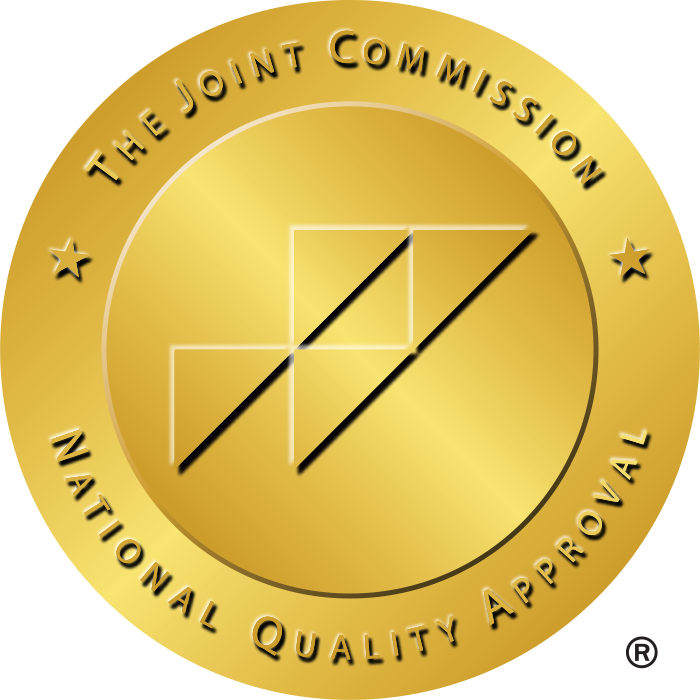The healthcare sector is rapidly transforming, fueled by technology, an aging population, and a growing emphasis on preventive care. By 2025, the industry is expected to create millions of jobs around the world, allowing chances for professionals at all levels.
Now, more than ever, whether you’re a recent graduate, a seasoned practitioner, or a person contemplating a career transition, it’s essential to know which roles will dominate the market — and how to prepare yourself to succeed.
Below are the top 10 healthcare jobs on track for explosive growth by 2025, an overview of what it takes to succeed, and practical steps to make you shine.
Nurse Practitioner (NP)
Why It’s In Demand
Nurse practitioners are filling roles traditionally occupied by physicians, especially in primary care and underserved areas. And with increasing demands for accessible healthcare and fewer and fewer primary care physicians around, NPs are simply indispensable. The profession is projected to increase by 40% between 2022 and 2032, making it one of the fastest-growing positions in health care.
Qualifications and Skills
First, you’ll need either a Master of Science in Nursing (MSN) or a Doctor of Nursing Practice (DNP), plus state licensure, to become an NP.” Employability can be increased through specializations such as family care, gerontology, or mental health. Essential skills include diagnostic skills, communication with patients, and adaptability in high-pressure situations.
How to Stand Out
Get experience in high-need areas, such as rural health or urgent care. Identify and pursue telehealth credentials, as it is being integrated more into primary care. Networking within professional organizations such as the American Association of Nurse Practitioners (AANP) can also create a pathway.
Physician Assistant (PA)
Why It’s In Demand
Physician assistants work alongside physicians to diagnose illnesses, create treatment plans, and perform procedures. They are stepping into gaps critical to improving care in surgical and emergency settings as healthcare systems emphasize cost-effective care. The employment of PAs is expected to increase by 28% by 2032, which is much higher than the average of all professions.
Qualifications and Skills
The completion of a master’s degree program from an accredited PA program and passage of the Physician Assistant National Certifying Exam (PANCE) are requisite. Ability to work well in teams, cope with emotional stress, and navigate electronic health records (EHRs) are also important.
How to Stand Out
Try to rotate in high-demand specialties, such as orthopedics or oncology. Emphasize any experience with AI-driven diagnostic tools that are becoming the standard for a lot of clinics today.
Home Health Aide
Why It’s In Demand
The global population is aging, which is driving up demand for in-home care. Home health aides help elderly or disabled patients with daily activities, allowing them to maintain their independent living. This position will grow 22% by 2032, largely due to the Baby Boomers’ preference to avoid institutionalized care.
Qualifications and Skills
Most positions will require a high school diploma and state-approved training. Compassion, patience, and physical stamina are key, as the work often involves lifting patients and handling chronic diseases.
How to Stand Out
If you obtain certifications in dementia care or palliative support, you can become a preferred job applicant. Delivering meals with organizations like Meals on Wheels is a commitment to health in the community.
Medical & Health Services Manager
Why It’s In Demand
Healthcare administrators are the backbone of operational clinics, hospitals, and nursing homes. As facilities multiply and rules multiply, the need for skilled managers who can navigate billing systems, compliance efforts, and staff coordination only grows. The BLS projects 28% growth in the field by 2032.
Qualifications and Skills
A bachelor’s degree in healthcare administration or business is standard, but many employers prefer one with a master’s. Critical thinking, leadership ability, and knowledge of healthcare laws, such as HIPAA, are also important.
How to Stand Out
Gain proficiency in the data analytics software employed for the enhancement of patient flow. Certifications such as the Certified Healthcare Executive (CHE) can help validate your credentials as a leader.
Physical Therapist (PT)
Why It’s In Demand
A growing aging population and chronic ailments like arthritis and diabetes will help drive demand for physical therapists. The profession is projected to grow 15% through 2032, with a future in outpatient clinics, sports medicine, and home healthcare.
Qualifications and Skills
To pursue this career, you need to earn a Doctor of Physical Therapy (DPT) degree and gain a state license. Specific skills that are key assets are manual dexterity, empathy, and knowledge of recovery technologies (for example, robotic exoskeletons).
How to Stand Out
Niche areas like pediatric PT or vestibular rehabilitation. Attend workshops focusing on the latest therapies, like dry needling or telehealth-based rehab programs.
Health Information Technician
Why It’s In Demand
As the healthcare field becomes digital, professionals who can manage EHRs, ensure data accuracy, and protect patient privacy are needed. Employment for health information technicians is expected to expand by 16% through 2032, with hospitals and insurers at the forefront of hiring.
Qualifications and Skills
An associate degree in health information technology and certification (e.g., RHIT) are common. Having a strong attention to detail, understanding of coding systems (ICD-10), and knowledge of cybersecurity basics are all must-haves.
How to Stand Out
Learn SQL and other programming languages for database management. Follow the latest on blockchain for secure sharing of health data.
Telehealth Specialist
Why It’s In Demand
The pandemic served as a catalyst for telehealth, and those adoption trends are here to stay. Telehealth specialists provide remote consultations, track patients with wearable devices, and manage digital care teams. More than 75% of hospitals currently use telehealth, creating thousands of new positions.
Qualifications and Skills
It is ideal to have clinical credentials (e.g., RN, MD) along with telehealth certifications. This requires tech-savviness, adaptability, and good bedside manner (including over a screen).
How to Stand Out
Get to know platforms like Teladoc or Amwell. Demonstrate any experience with remote patient monitoring or digital triage systems.
Mental Health Counselor
Why It’s In Demand
Finally, mental health is getting the attention it deserves. Counselors who specialize in anxiety, trauma , or substance abuse are in great demand, and the field is expected to grow by 22% by 2032.
Qualifications and Skills
A master’s in counseling or psychology is necessary, as is state licensure. Active listening, cultural competency, and crisis management skills are non-negotiable.
How to Stand Out
Train in evidence-based modalities such as Cognitive Behavioral Therapy (CBT). Download and use teletherapy options to bring care to hard-to-reach communities.
Respiratory Therapist
Why It’s In Demand
Respiratory therapists are essential for treating chronic lung diseases, including COVID-19 long-haulers and premature babies. The field is projected to expand 14% through 2032, fueled by pollution-related ailments and aging communities.
Qualifications and Skills
You need to earn an associate or bachelor’s degree in respiratory therapy and get licensed. The ventilators, the diagnostic testing, the emergency response protocols, all of those are key.
How to Stand Out
Certifications in neonatal/pediatric care or pulmonary function testing can give you an edge. Gain hands-on experience by volunteering for rapid-response teams in hospitals.
Tips for Landing Your Ideal Job in the Healthcare Career
Getting a job in healthcare is competitive and often takes a proactive, strategic approach in addition to a great resume. Here’s how you can position yourselves for success in 2025 and beyond:
Commit to Lifelong Learning
The field of health care evolves rapidly, with advances in AI, genomics, and telehealth redefining how care is delivered. That means the key to staying ahead is committing to ongoing education.
For example, a nurse practitioner pursuing a certification in AI-driven diagnostics becomes invaluable to clinics adopting smart health tools. Consider courses as broad as Genomics and Precision Medicine (Johns Hopkins) or AI in Healthcare (MIT) on platforms like Coursera or edX, to deepen your expertise.
Many employers even subsidize certifications — ask if they provide tuition reimbursement for credentials such as Certified Telehealth Professional (CTP). A 2023 LinkedIn report states that 40% more job offers go to professionals with certifications, evidence that ongoing learning reflects adaptability and ambition.
Build a Strategic Network
Networking isn’t simply exchanging business cards — it’s nurturing relationships that lead to mentorship and opportunities. Become a member of groups such as the American Medical Association (AMA) or consider attending events like the American Association of Nurse Practitioners (AANP) annual summit, which is where hiring managers seek future candidates.
Virtual coffee chats with people doing your desired role can also give you insights. One respiratory therapist who had reached out to a hospital’s pulmonary team through LinkedIn scored an interview following an expansion of the department. These connections are crucial, given that 85% of jobs are filled through networking, according to a 2022 PayScale survey.
Craft a Results-Driven Resume
Your resume should be about impact, not duties. Instead of vague statements like “Managed patient records,” use quantifiable accomplishments: “Reduced EHR documentation errors by 25% for 500+ patients.”
Devote a section to tech proficiencies (for example, Epic Systems or Python as tools for data analytics or Doxy for telehealth) and list them out. Soft skills also count — phrases like “culturally competent care” resonate with employers who prioritize diversity.
Take things a step further: use AI tools such as Jobscan to customize your resume based on job descriptions. So, if a hospital prioritized community outreach, put the emphasis on volunteer work at free clinics.
Master the Interview
Interviews provide you with an opportunity to demonstrate fit and problem-solving skills. Use the STAR method (Situation, Task, Action, Result) to structure answers.
Example: “When the COVID surge hit, I trained 15 nurses in triage protocols, increasing patient throughput by 30% in two weeks.” Do your research on the employer — if they’re adopting AI, get in touch about your experience with similar tools.
Ask probing questions such as, “How does your team approach telehealth innovation?” Candidates who ask thoughtful questions are 50% more likely to get offers, since it shows engagement and critical thought.
Partner with StaffDNA
When you do it alone, it is difficult to navigate the job market. StaffDNA matches you with customizable opportunities, which include resume reviews, interview preparation, and access to jobs that are not advertised in the best hospitals.
Whether you’re looking for a telehealth position or a leadership position, our recruiters will work with you and find a way to pair your skills with what today’s employers need.”
Take Action Today
It’s a future of healthcare for the agile, the innovative, the connected. Please take some time and invest in education/resume/networking, and let us do the marketing for you! (Visit StaffDNA to upload your resume and see opportunities.) Your dream role is just a click away — get started today and help to shape the future of care.







